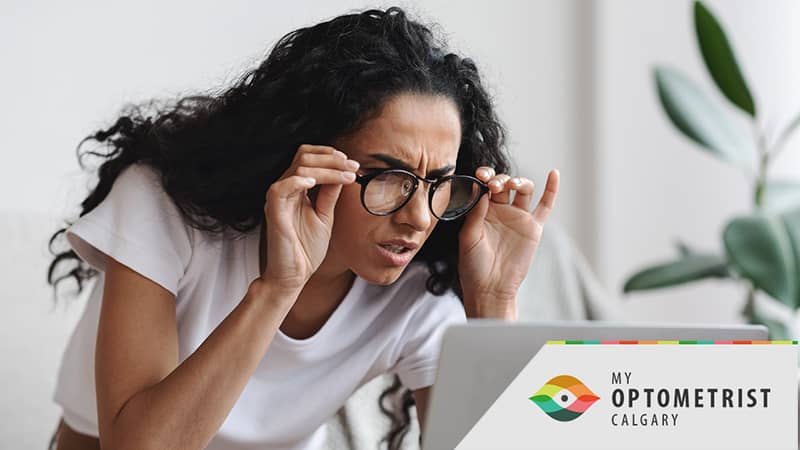
Myopia is a refractive error more commonly referred to as nearsightedness. When light passes through the cornea and lens, it bends (called refraction) so that it hits the retina. This light on the retina will then be interpreted by the brain to create images. When a person has myopia, the shape of their eye changes the way light enters the eye so that it cannot focus on the correct spot on the retina. Since the light is focused in front of the retina, distant objects appear blurry. Myopia can also cause the eyeballs to slowly become longer, which can result in a worsening prescription over time. If you or your child exhibit any of the signs or symptoms of myopia, visit an optometrist to receive testing and treatment options.
Myopia: What It Is And What To Do About It
Indicators Of Myopia
There are several signs that can indicate myopia in adults and children:
- Eyestrain
- Headaches
- Squinting
- Difficulty seeing distant objects
If you notice any of these symptoms, schedule an eye exam to have your or your child’s prescription checked.
Diagnosis
When you go for an eye exam, your optometrist will check for visual impairments and refractive errors. To determine if a patient has myopia, an optometrist will complete a standard vision test that will ask you to read letters presented on a board. Each line of letters will be smaller than the previous line, which will help determine the severity of myopia. To test each eye individually, this test will be completed with one eye covered at a time, as each eye can have a different prescription. Your optometrist will also perform a retinoscopy, where they shine a light into the retina to measure the reflection off of the retina to determine the refractive error of the eye. A phoropter will also be used to determine your prescription. This is the device that you look through as it gently rests on the bridge of the nose. It has multiple lenses that your optometrist will switch and ask you to tell them which lenses make vision appear clearer. This device is instrumental in determining an accurate prescription.
Treatment And Myopia Control
When vision is limited due to myopia, prescription eyeglasses or contacts will likely be prescribed. While this does not treat or cure myopia, it does mitigate the main symptom of blurred vision. Corrective lenses bend light before it enters your eyes so that when your eye bends the light again, it will now hit the correct spot on the retina and translate to a clear image in your brain. Other treatment options to address the shape of the eye include:
- Laser Eye Surgery, referred to as LASIK, which reshapes the eyes and can correct the refraction of light.
- Low-dose atropine in the form of eye drops, which has recently shown promising results in slowing the elongation of the eyes.
- Orthokeratology, which is the use of rigid, gas-permeable contacts that are worn during the day to reshape the curvature of the eyes. These contacts must be used as an ongoing treatment or the eyes will revert to their previous shape.
Visit A Calgary Optometrist For Myopia Control
If you notice the symptoms of myopia in you or your child, visit a Calgary optometrist for an eye exam. Having an eye exam will confirm whether or not you have myopia and allow you to begin myopia control and receive the right prescription to see clearly. While myopia is often diagnosed between ages 8 and 12, it can worsen over time, requiring regular eye exams for anyone with myopia throughout their lives to keep their prescription up to date. The skilled Calgary optometrists at My Optometrist can determine this prescription for you and discuss any myopia treatments you are interested in. To book an eye exam with one of our optometrists, contact My Optometrist at one of our three locations, either at Health First in SE Calgary, Sunridge in NE Calgary, or Three Hills, AB. You can also call us or fill out the online contact form.
FAQ
Q: What are the risk factors for myopia?
A: Genetics play a factor and nearsightedness tends to run in families. It has recently been proposed that not going outside enough is also linked to myopia. Although this is still being researched, getting outside, especially for children, benefits health overall and is encouraged.
Q: How common is myopia?
A: Myopia is very common, with over 80 million children diagnosed with myopia worldwide and rates are reportedly increasing.
Q: Can myopia lead to blindness?
A: In general myopia does not cause blindness, however, there is a rare type of myopia called degenerative myopia that can lead to eventual blindness. This type of myopia typically only presents in about 2% of the population.